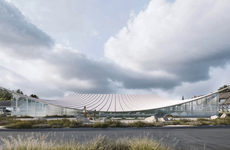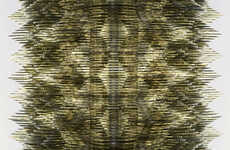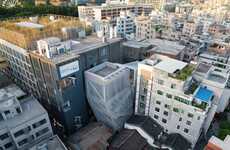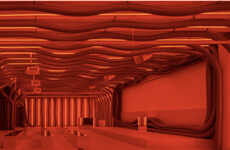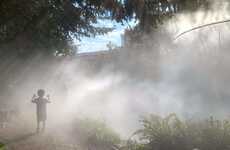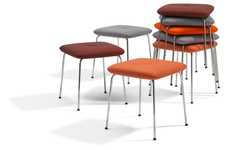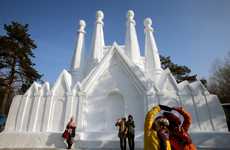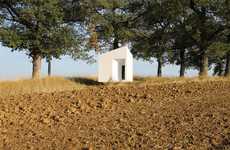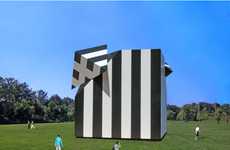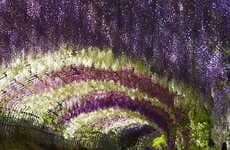
Pratt Gaud Exhibition 2012 Presents Amazingly Crafted Art
Kevin Young — April 17, 2012 — Art & Design
References: ifud.org & designboom
In New York City, the Pratt GAUD Exhibition 2012 showcases a spectacular and well-crafted suspended structure that makes art viewing a lot more interesting.
This large-scale art installation hovers over the Hazel and Robert H. Siegal gallery, which takes up more space, but offers plenty of art watching through its tubular design. It's created with cardboard and thin plywood, all of which are connected with 6,000 clippings that hold 2,400 triangle panels.
The design is strategically placed so viewers can peer through the tunnels to get a glimpse of art work on the other end. By looking through this interconnected tubular design, people are able to see the work of urban design and architecture from students over the past five years.
Photo Credits: designboom, ifud.org
This large-scale art installation hovers over the Hazel and Robert H. Siegal gallery, which takes up more space, but offers plenty of art watching through its tubular design. It's created with cardboard and thin plywood, all of which are connected with 6,000 clippings that hold 2,400 triangle panels.
The design is strategically placed so viewers can peer through the tunnels to get a glimpse of art work on the other end. By looking through this interconnected tubular design, people are able to see the work of urban design and architecture from students over the past five years.
Photo Credits: designboom, ifud.org
Trend Themes
1. Telescopic Paper Installations - The use of cardboard and thin plywood to create large-scale art installations provides a disruptive innovation opportunity for the art industry.
2. Interconnected Tubular Designs - The strategic placement of interconnected tubular designs in galleries and museums could revolutionize the art-viewing experience.
3. Clipping-based Assembly - Incorporating 6,000 clippings for the assembly of triangle panels presents a cost-effective and eco-friendly innovation opportunity for the paper and packaging industry.
Industry Implications
1. Art - Using low-cost materials to create large-scale installations could disrupt the art world by making it accessible to a larger audience.
2. Design - Interconnected tubular designs can be used in architecture, interior design, and exhibition design which presents disruptive innovation opportunities for these industries.
3. Paper and Packaging - The use of clipping-based assembly could disrupt the paper and packaging industry by reducing production costs and promoting sustainability.
5.3
Score
Popularity
Activity
Freshness


